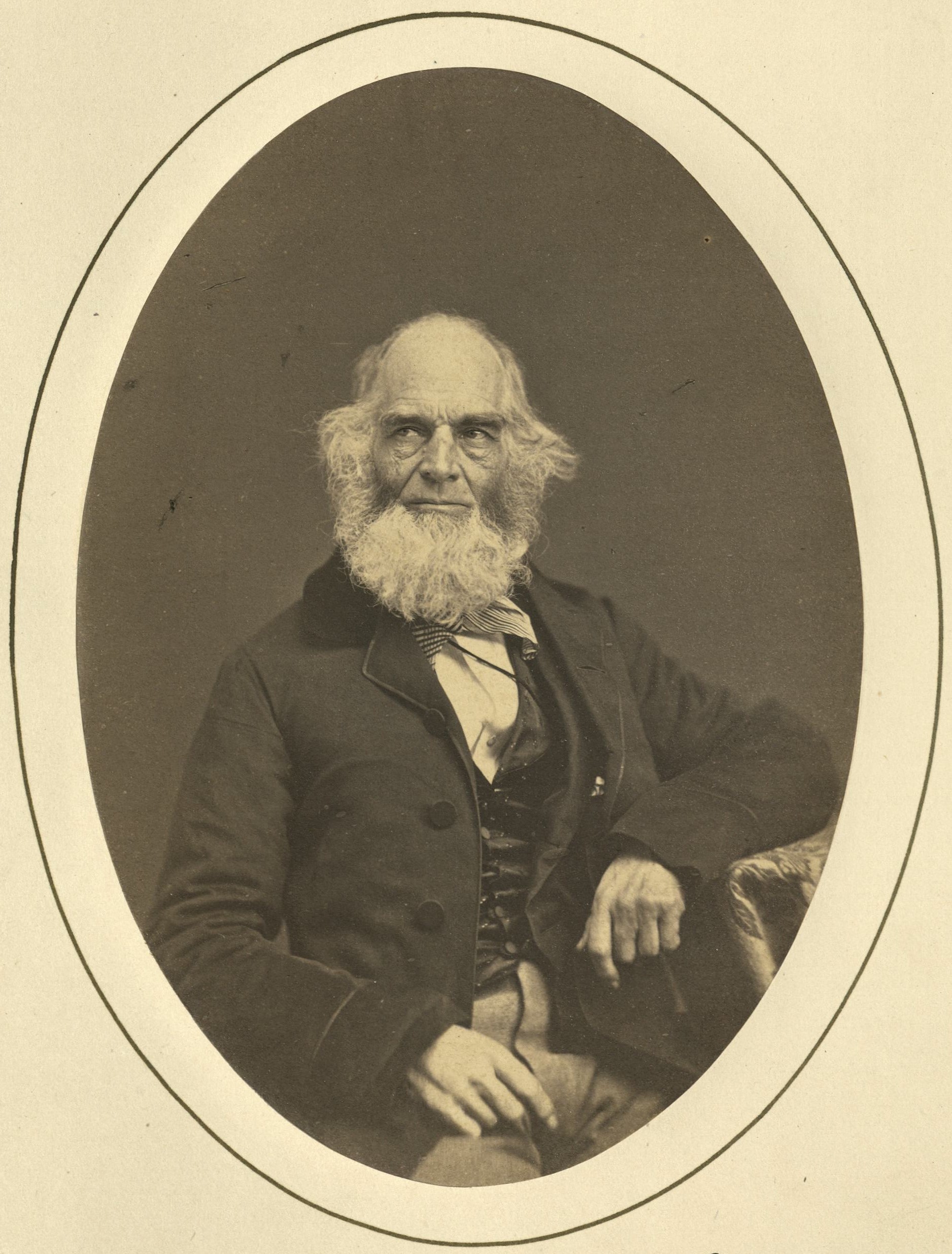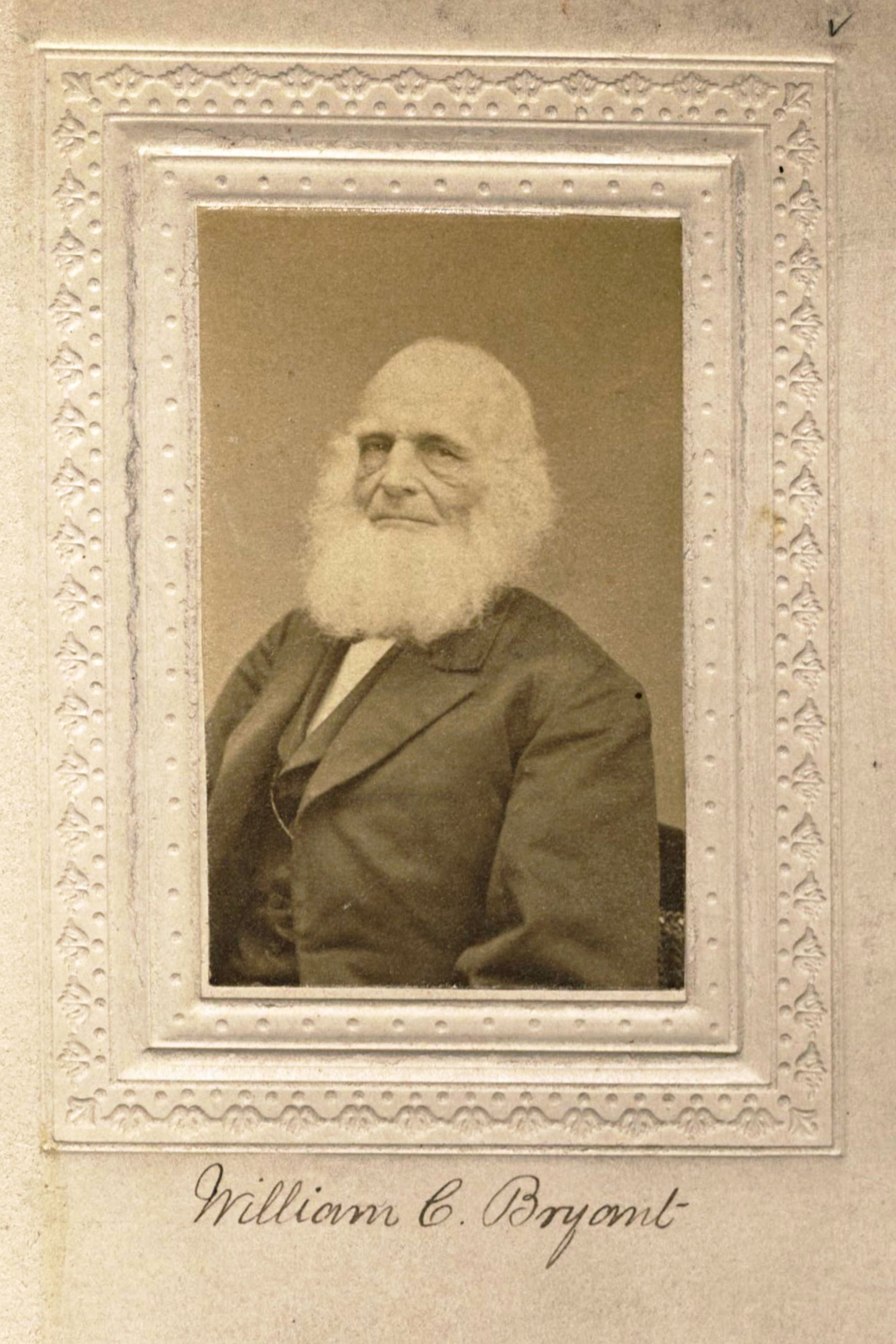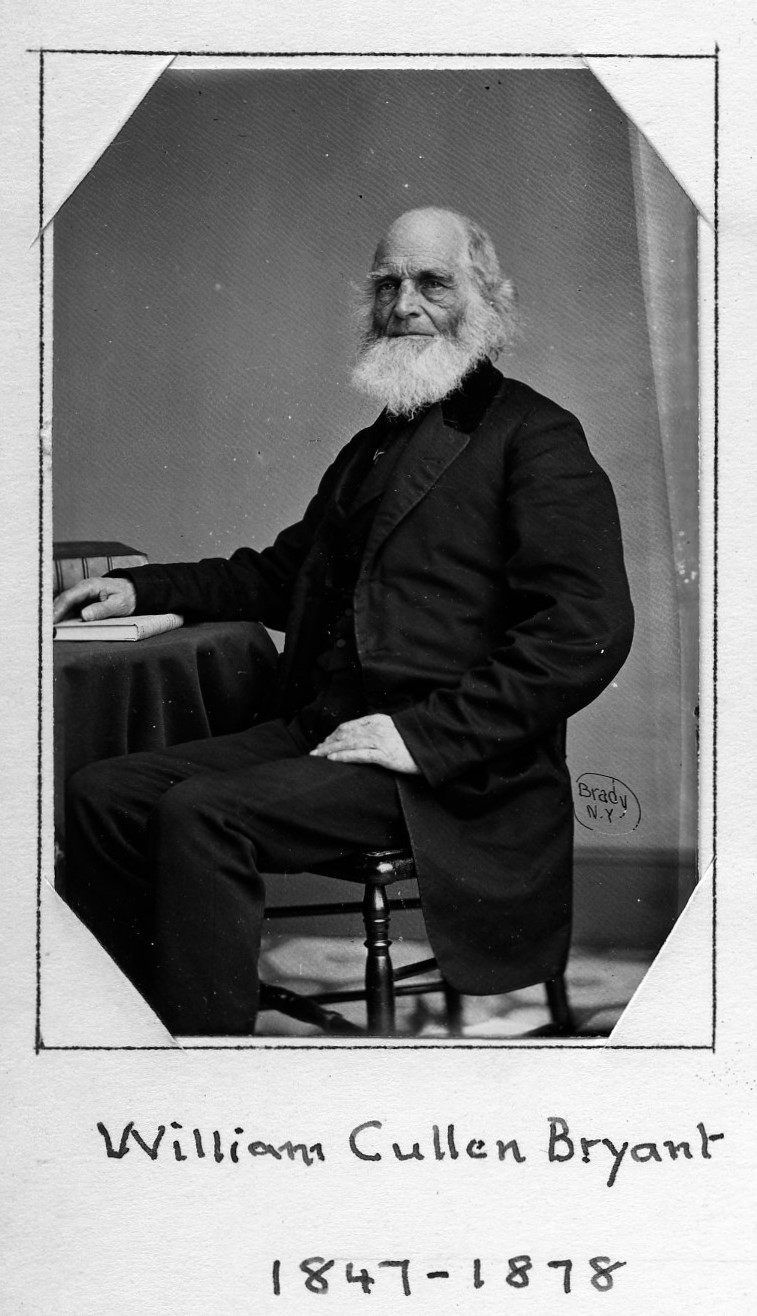Poet/Editor/Civic Affairs
Centurion, 1847–1878
Born 3 November 1794 in Cummington, Massachusetts
Died 12 June 1878 in New York (Manhattan), New York
Buried Roslyn Cemetery , Roslyn, New York
, Roslyn, New York
Proposed by N/A: Founder
Elected 13 January 1847 at age fifty-two
Archivist’s Note: President of the Century Association, 1868–1878. Father-in-law of Parke Godwin; grandfather of Bryant Godwin. In 1864, to commemorate his seventieth birthday, the Century held a grand festival in his honor, featuring addresses from guests such as Ralph Waldo Emerson and Julia Ward Howe; on that occasion, several artist members of the club donated paintings to the esteemed poet. Ten years later, for his eightieth birthday, a committee of Bryant’s friends including twenty-five Centurions commissioned the Bryant Vase from Tiffany’s, designed by James Horton Whitehouse with decorations by Augustus Saint-Gaudens, now held by the Metropolitan Museum of Art. The Bryant Monument in Bryant Park, one block south of the current Century Association clubhouse, was funded by subscriptions from Century members; executed by Herbert Adams with a pedestal by Thomas Hastings, it was unveiled in 1911.
Proposer of:
Seconder of:
Century Memorials
The list of members deceased during the year contains the names of eleven; E. R. Peaslee, Theodore Roosevelt, E. Delafield Smith, M. Knoedler, Edward Satterlee, William C. Bryant, Geo. S. Appleton, John S. Baker, Adam T. Sackett, William M. Allen and Bayard Taylor.
Augustus R. Macdonough
1879 Century Association Reports
William Cullen Bryant, editor of the Evening Post, author of “Thanatopsis,” “To a Waterfowl,” and many other poems, was sixty-two years old when the Century was incorporated. He later served eleven years as its third president.
Verplanck not only wrote a favorable review of Bryant’s second book, published in 1825, but helped the youthful attorney from Great Barrington to get an editorial position in New York.
Philip Hone recorded in his diary, April 20, 1831: “While I was shaving this morning at eight o’clock I witnessed” from his window at No. 235 Broadway “an encounter in the street nearly opposite between William C. Bryant, one of the editors of the Evening Post, and William F. Stone, editor of the Commercial Advertiser,” which a few days earlier had called Bryant a liar. “The former commenced the attack by striking Stone over the head with a cowskin; after a few blows the parties closed and the whip was wrested from Bryant and carried off by Stone.”
Hone remarked several years later: “How such a black-hearted misanthrope as Bryant should possess an imagination teeming with beautiful poetical images astonishes me; one would as soon expect to extract drops of honey from the fangs of a rattlesnake.”
At Bryant’s seventieth birthday festival at the Century clubhouse in Fifteenth Street, Ralph Waldo Emerson said: “. . . this artist of ours . . . has continued to levy on all American nature, has subsidized every solitary grove and monument-mountain in Berkshire or the Katskills, every gleaming water, the ‘gardens of the Desert,’ every waterfowl and woodbine, the evening wind, the stormy March, the song of stars—has suborned every one of these to speak for him, so that there is no feature of day or night in the country which does not, to a contemplative mind, recall the name of Bryant.”
On the same occasion, Centurion Bayard Taylor described Bryant as “our Country’s earliest Bard.”
Adolph W. Callisen writes that he often spent the day at Bryant’s home at Roslyn. “I remember him as a rather grim old man with a long white beard, bushy eyebrows and long hair hanging down on his coat collar. He was, however, kindly; and as a boy I was not a bit afraid of him. On one occasion I recited one of his own poems to him I learned in school, and the old gentleman seemed amused.”
Centurion Robert Underwood Johnson said recently: “Bryant looked like Homer. He was genial and dignified. He lived near Union Square and used to walk all the way downtown to the office of the Evening Post near the City Hall.”
As we get off the elevator at the dining-room floor, we pass the Homeric bust of Bryant cut in marble by Launt Thompson. In our library is the full-length statuette of Bryant by Centurion Edward J. Kuntze. Bryant, with his upper lip shaved and his sensitive mouth revealed, is shown in the portrait by his friend Asher B. Durand, which hangs in our dining room.
Literature Committee
“Incorporators of the Century, 1857” (1936 pamphlet)



